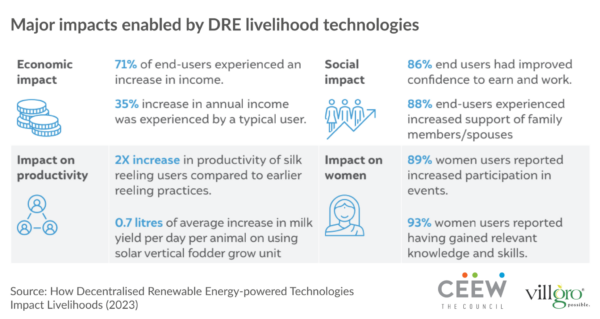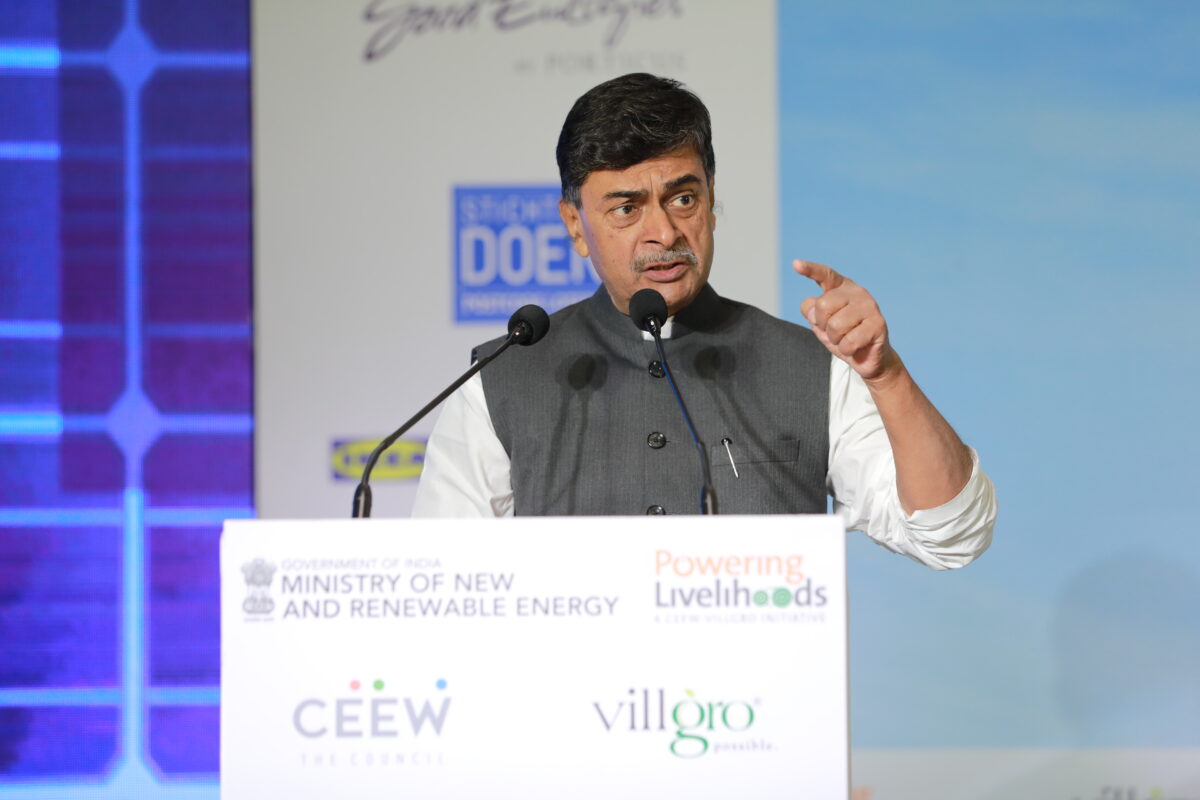India’s power minister R.K. Singh said the government is bringing a scheme for distributed renewable energy-based livelihood applications that could benefit lakhs of families across the country.
The Ministry of New and Renewable Energy has already been supporting off-grid renewable energy applications, including solar streetlights, solar lamps, standalone solar pumps, etc. A number of livelihood applications can be integrated with distributed renewable energy sources to provide clean and reliable power and increase the users’ productivity and income.
The power minister stressed on the need for large scale-manufacturing and [component] standardization to lower equipment prices and expand the distributed renewable energy-based livelihoods sector.
India has witnessed the fastest growth rate in renewable energy capacity addition among all large economies, primarily driven by its success in utility-scale solar installations.
“We have seen the potential of grid-scale solar power; India will scale up distributed renewable energy applications for livelihoods. Just like we have a large program on rooftop solar and solar irrigation, we will create a large program for DRE livelihoods,” said the minister at the ‘National Summit on Powering Sustainable Livelihoods’ organized by the Council on Energy, Environment and Water (CEEW) and Villgro Innovations Foundation’s Powering Livelihoods initiative.

“The government plans to make DRE livelihood equipment affordable. One aspect of this will be tying up with banks. If a family wants to own a solar dryer, they should be able to get financing from the banks – we will work towards it. Manufacturers and users of DRE for livelihoods are pioneers, and now the government will scale it up to the next level,” he added.
On the occasion, the minister released two new reports by CEEW and Villgro, which show that clean technologies have the potential to impact 37 million livelihoods in India’s agriculture and textile sectors and translate into a market opportunity worth almost INR 4 lakh crore (about $50 billion). Further, 70% of women and farmers using clean technology reported an increase in income, typically by 35%. They use clean-energy powered products such as solar-powered silk reeling machines, multi-food processors, micro solar pumps, and solar vertical fodder grow units, among others, to enhance and diversify their income.
This content is protected by copyright and may not be reused. If you want to cooperate with us and would like to reuse some of our content, please contact: editors@pv-magazine.com.









1 comment
By submitting this form you agree to pv magazine using your data for the purposes of publishing your comment.
Your personal data will only be disclosed or otherwise transmitted to third parties for the purposes of spam filtering or if this is necessary for technical maintenance of the website. Any other transfer to third parties will not take place unless this is justified on the basis of applicable data protection regulations or if pv magazine is legally obliged to do so.
You may revoke this consent at any time with effect for the future, in which case your personal data will be deleted immediately. Otherwise, your data will be deleted if pv magazine has processed your request or the purpose of data storage is fulfilled.
Further information on data privacy can be found in our Data Protection Policy.